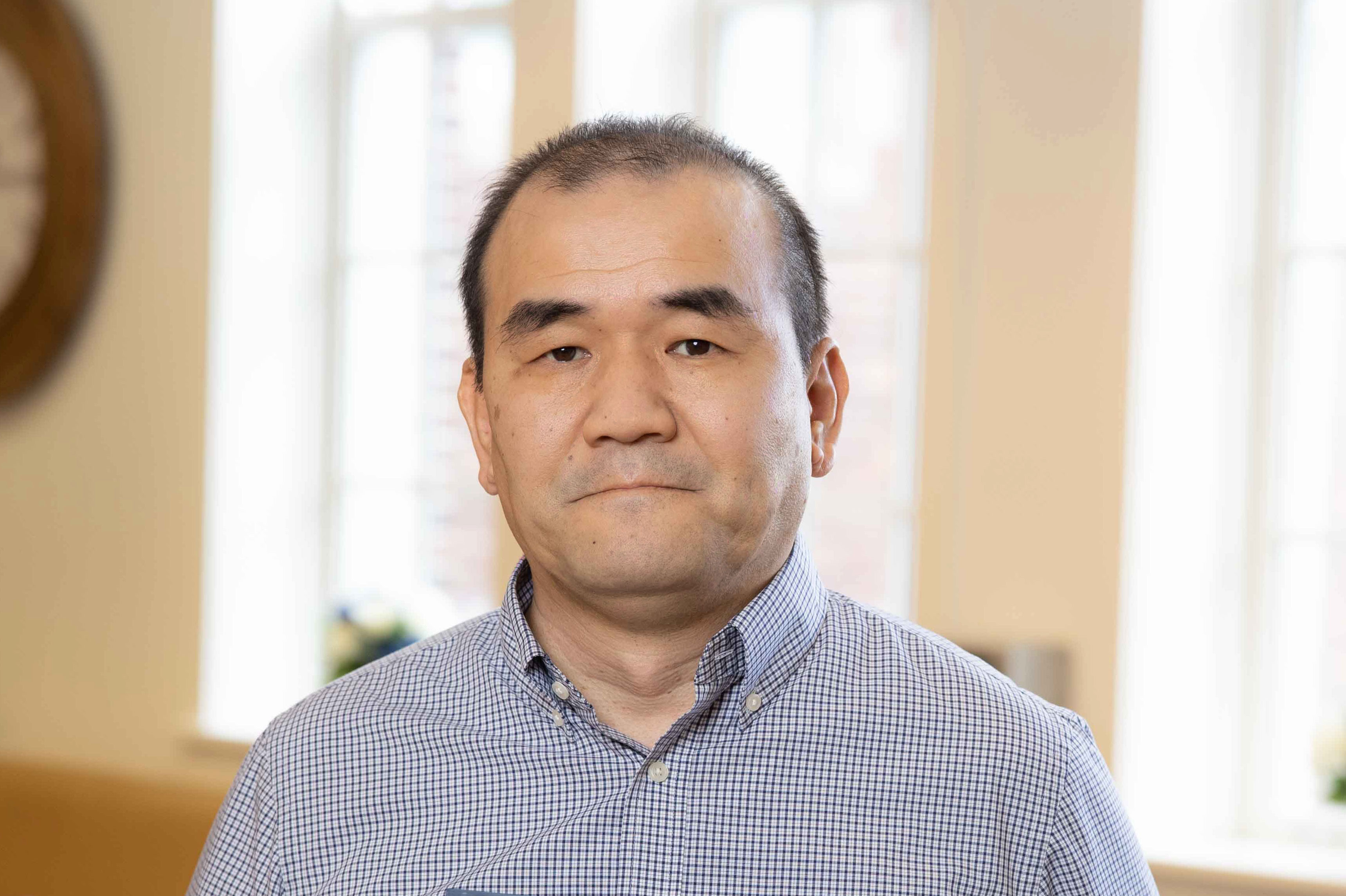
Professor Kazushige Yokoyama (SUNY Geneseo/Keith Walters ’11)
Author
Additional Authors and Editors
Eli Barbour ’23, Rachel Hirschkind ’24, Bryan Martinez Hernandez ’24, Kaylee Hausrath ’21, and Theresa Lam ’22.
Publication
Langmuir (2024)
Summary:
The aggregation of a particular protein attached to small gold particles was detected in detail.
Abstract:
Amyloid fibrillogenesis is a pathogenic protein aggregation process that occurs through a highly ordered process of protein–protein interactions. To better understand the protein–protein interactions involved in amyloid fibril formation, we formed nanogold colloid aggregates by stepwise additions of ∼2 nmol of amyloid β 1–40 peptide (Aβ1–40) at pH ∼3.7 and ∼25 °C. The processes of protein corona formation and building of gold colloid [diameters (d) of 20 and 80 nm] aggregates were confirmed by a red-shift of the surface plasmon resonance (SPR) band, λpeak, as the number of Aβ1–40 peptides [N(Aβ1–40)] increased. The normalized red-shift of λpeak, Δλ, was correlated with the degree of protein aggregation, and this process was approximated as the adsorption isotherm explained by the Langmuir–Freundlich model. As the coverage fraction (θ) was analyzed as a function of ϕ, which is the N(Aβ1–40) per total surface area of nanogold colloids available for adsorption, the parameters for explaining the Langmuir–Freundlich model were in good agreement for both 20 and 80 nm gold, indicating that ϕ could define the stage of the aggregation process. Surface-enhanced Raman scattering (SERS) imaging was conducted at designated values of ϕ and suggested that a protein–gold surface interaction during the initial adsorption stage may be dependent on the nanosize. The 20 nm gold case seems to prefer a relatively smaller contacting section, such as a −C–N or C═C bond, but a plane of the benzene ring may play a significant role for 80 nm gold. Regardless of the size of the particles, the β-sheet and random coil conformations were considered to be used to form gold colloid aggregates. The methodology developed in this study allows for new insights into protein–protein interactions at distinct stages of aggregation.
Primary research questions:
1. How does amyloid beta peptide attach to the gold surface?
2. How do amyloid beta attached gold particles bind together?
3. Are there any particle size dependence in these processes?
What was already known:
The amyloid beta coated gold colloids can form the aggregates.
What the research adds to the discussion:
It revealed the size dependence in protein attachment on gold particle surfaces for the first time.
Novel methodology:
It used a microscopy detecting very weak scattering signals by taking advantage of the field available on the gold surface.
Implications for future research:
This work has great potential for the development and design of sensitive devices for measuring the concentration of amyloidogenic peptides.
Citation:
Kazushige Yokoyama, Eli Barbour, Rachel Hirschkind, Bryan Martinez Hernandez, Kaylee Hausrath, and Theresa Lam. ”Protein Corona Formation and Aggregation of Amyloid β 1–40-Coated Gold Nanocolloids,” Langmuir 2024 40 (3), 1728-1746 DOI: 10.1021/acs.langmuir.3c02923
More Research Briefs
Call for Research
We invite SUNY Geneseo faculty to submit peer-reviewed research from the last three years to be added to this site.
